Editors’ note: Researchers at SRC explore many ways to implement resilience thinking with multiple partners and approaches. Rethink invited this commentary from the Massive Small Collective, an international network of urbanists, development practitioners, and researchers who support small-scale and incremental solutions to the challenges of sustainable urban development. Massive Small looks at examples of projects around the world that work with the complexity of urban environments. This series includes a piece on biomimicry for basic services in an informal settlement in South Africa.
About a year ago, a crowd gathered around a large wooden bench in the village of Bódvaszilas, in northeastern Hungary. An unusual group of villagers, children, design students and researchers, and the village mayor admired the bench. It was a thing of beauty and curiosity, and the community held a formal ceremony to inaugurate it.
Now, the bench has become a source of pride, cared for and used by everyone living in the Bódva Valley. It was built by primary school pupils from the local Roma community as a gift to the community, supported by a design team from the Moholy-Nagy University of Art and Design (MOME) in Budapest. The children carved messages inside the structure, hidden marks from these young designers.
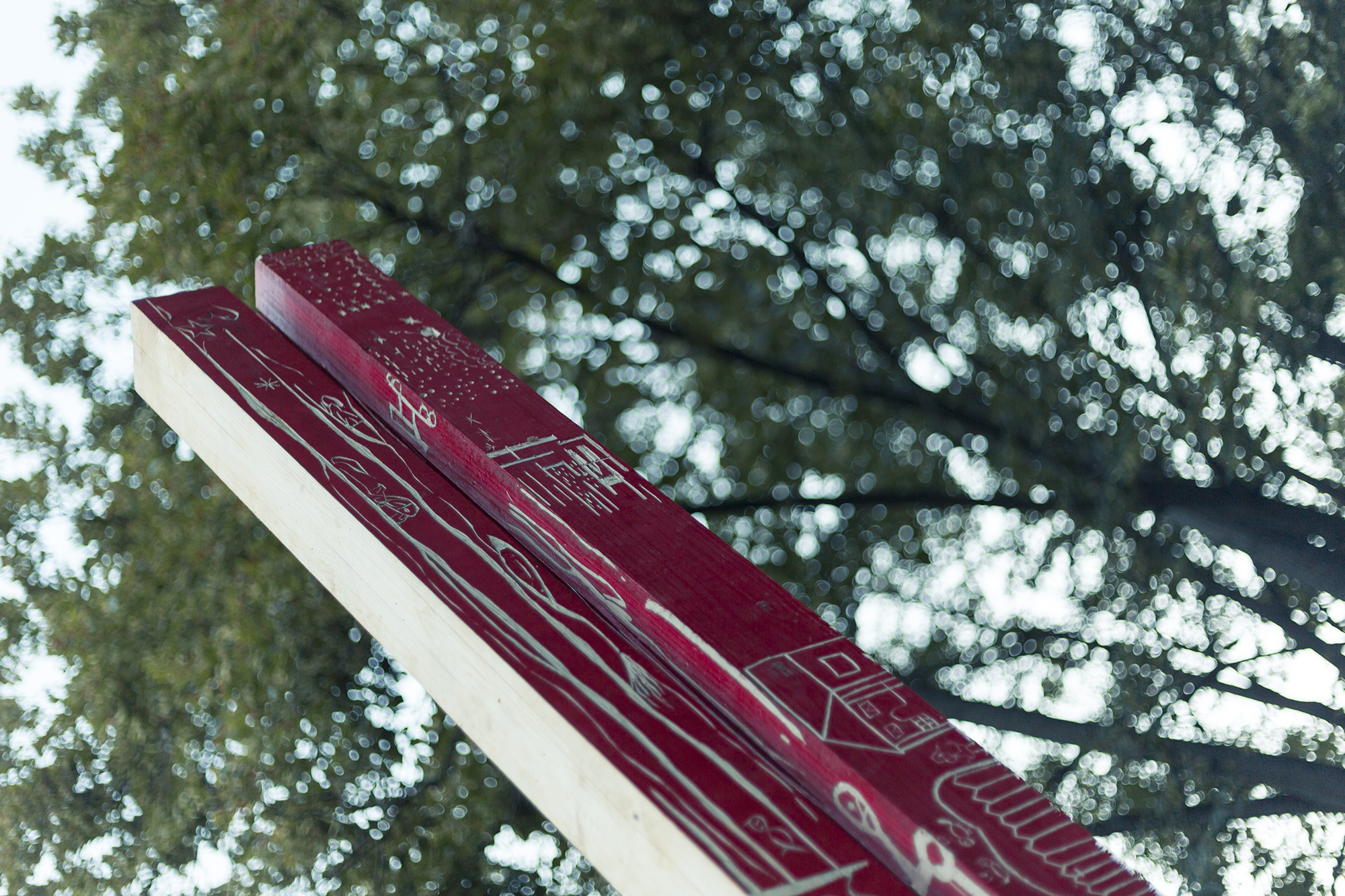
The children who designed the bench in Bódvaszilas carved their own marks, visible before the bench was assembled (as shown in the opening image above). Copyright: Nikolett Kustos; courtesy of Cloudfactory.
A public bench is as symbolic as it is practical. It is a place to rest and watch the world. But it is also a place to meet, talk, and share space, ideas, and wisdom. The children’s bench is the first public bench to be erected here, in an area where social divisions have kept people apart. These young designers have been marginalised by deeply held prejudice against Roma people. And yet here they stood at the centre of this festive moment.
The bench is the product of a slow social design process where a design team implements a series of small, experimental interventions, responding to the needs and ideas of residents. This slow design process has the potential to build resilience for communities, marginalised or in the mainstream.
Here, the villages of the Bódva Valley face challenges typically associated with developing regions: social stresses due to poverty and discrimination, a dependence on government support for survival, and environmental changes because of a shifting climate. Like our other Massive Small case study, based in the informal settlement of Langrug in the Western Cape of South Africa, we argue that local communities can participate and even direct solutions to resilience challenges from the start.
Building a Cloudfactory
The process that built the bench illustrates this approach. Led by the MOME EcoLab social design team, the Cloudfactory works at small scales to build sustainable development solutions that improve people’s lives.
The bench now stands as a sign of a subtle but fundamental shift in the way people here see public space, how the children see themselves, and how they can perceive what is both possible and doable in responding to the challenges of the village. The project behind this shift is the brainchild of Bori Fehér, a designer at MOME and leader of the EcoLab, who has worked as an architect in New York City, and her colleague Dániel Barcza, a landscape architect by training.
In 2010, Fehér and Barcza began a collaboration as part of the MOME EcoLab sustainability research group. The two designers drew in colleagues and students from various disciplines, all interested in design that responds to complex social and ecological challenges. All were interested in cultivating what Fehér calls a “social design attitude” for their respective practices.
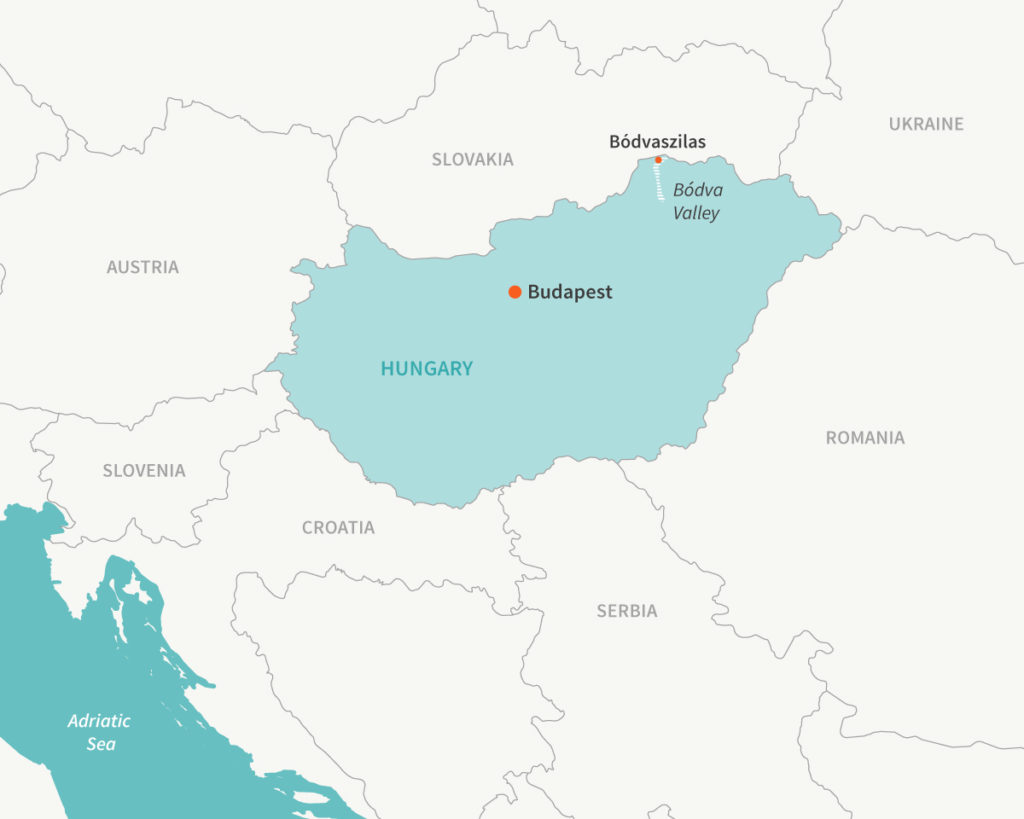
Bódvaszilas lies in the Bodva Valley, which straddles the border between Hungary and Slovakia and contains tens of villages and towns. Agriculture and mining affect the river and its water quality; flooding along the river might change as climate shifts. Copyright: Elsa Wikander/Azote.
The team eventually chose to focus on the Roma population of Bódvaszilas and surrounding villages in the Bódva Valley. Roma people in Hungary and elsewhere have been systematically marginalised, targeted for discrimination as well as violence. The people here live in well-documented conditions of extreme poverty. They face enduring systemic challenges such as social exclusion, lack of economic opportunity, and energy and food insecurity.
Educational segregation of Roma children also has an entrenched history in Hungary. Only 10% of Roma children go from primary school to matriculation, finishing secondary school.1 1. Majtényi, B., Majtényi, G., 2016. A Contemporary History of Exclusion: The Roma Issue in Hungary from 1945 to 2015. Central European University Press: Budapest & New York. JSTOR Stable URL See all references These rates are low, even compared with average secondary completion rates for developing economies in sub-Saharan Africa, which stand at 24%, according to UNICEF. They are lower even than the average for the “least developed countries”, which stand at 17%.
In the primary school where Fehér and her colleagues would end up working most, 90% of the children are Roma, compared with only 20% of people living village. Of those children, 70% fit the label “underprivileged”.
Before finding a local partner, the team started a project to write a cookbook of nutritious meals that cost little money, using local wisdom including foraging in the local forest and other sustainable harvesting methods. The result was an inviting compendium of recipes and images to share with the local communities. Only, none of the valley residents really needed it or wanted it.
This early miscalculation sent the academic design team members back to the drawing board. They created a code of conduct, not just for themselves, but for all the people participating in the project. The project now monitors positive and negative impacts by constructing feedback loops through regular check-ins, interviews, and dialogues. The project emphasises a slow process and engaging with each other with sensitivity and caution.
“We had to fail a few times before we got community engagement right. We wanted to do something but we did not have the time to get a real understanding of the context. We had a lot of data from OECD and Eurostat. We had a lot of information, but little understanding,” Fehér says, reflecting back on how the project started.
Over the course of a full year, Fehér says the team tried small interventions with local stakeholders. Their patience would earn them the right to learn and work with the school. The MOME designers helped the school kids to create a book of illustrations of clouds they had drawn, The Cloud Book, accompanied by poems that respond to each child’s drawing, written by Hungarian authors. The power of imagination to shape possibility also inspired the project’s name: the Cloudfactory.
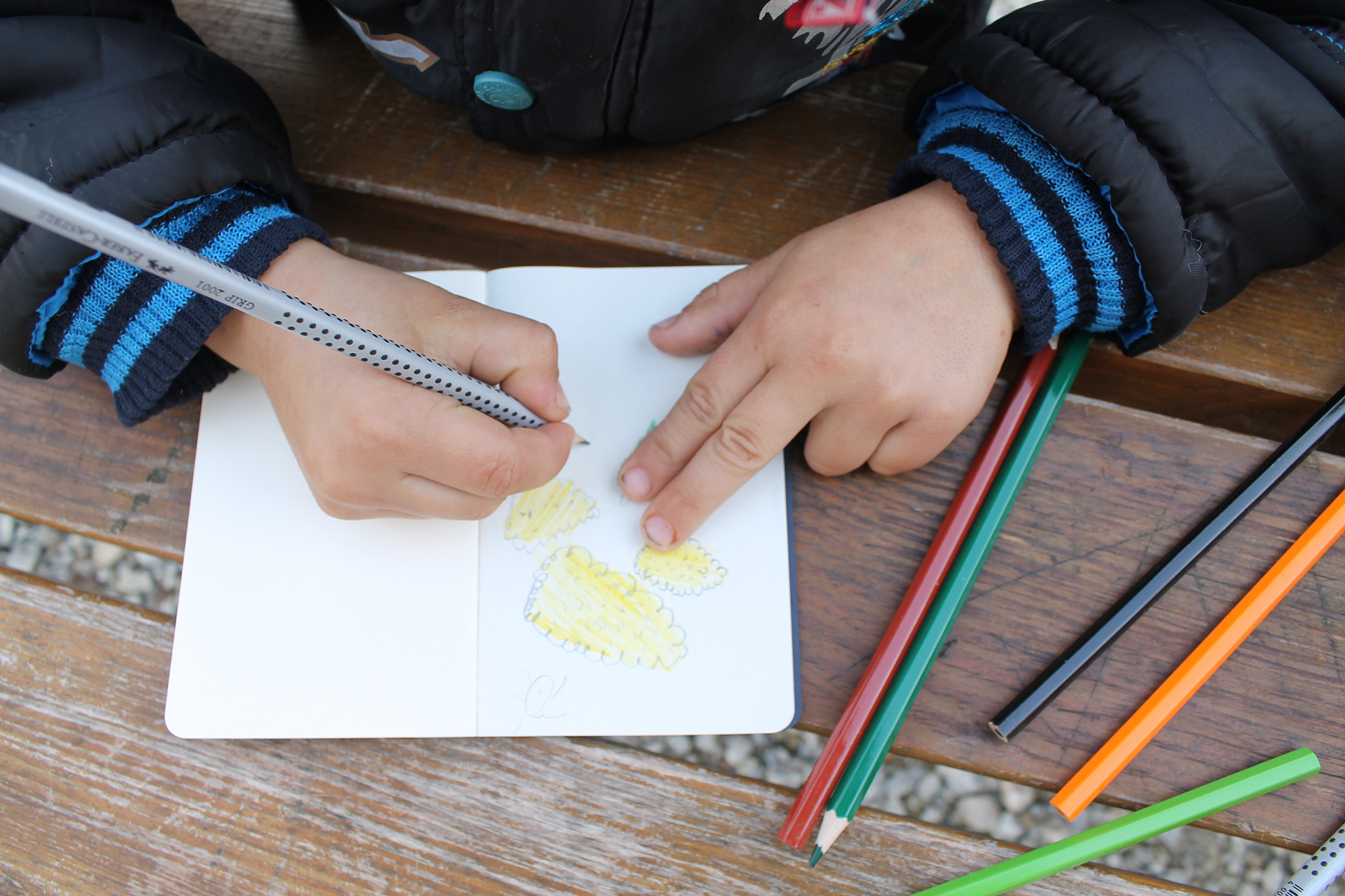
First sketches: the children of Bódvaszilas drew clouds for a book of images and poetry that gave the name to the project, the Cloudfactory. Copyright: Daniel Barcza; courtesy of Cloudfactory.
The school acts as a bridge between students, villagers, and EcoLab researchers. It also acts as a buffer, managing the relationships between the Cloudfactory, the school and students, and diverse competing interests in the village. From the perspective of resilience thinking, a local partner not only helps to broaden participation; it also manages connectivity and feedback loops that could steer work off course.2 2. Simonsen, S. H., Biggs, R., Schlüter, M., Schoon, M., Bohensky, E., Cundill, G., Moberg, F., 2014. Applying resilience thinking: Seven principles for building resilience in social-ecological systems. Stockholm Resilience Centre. 20 pp. Download PDF See all references
A few years into the project, the team planned its first major built intervention: an interactive learning landscape. They began by painting a paved playground with a set of shapes, numbers, and letters. Without funding to complete an elaborate construction project, they returned to Budapest dissatisfied with this mere shell of their original design.
That enforced simplicity became a boon: the community would find ways to use this open space. Teachers started to use the painted landscape to teach literacy and numeracy through physical play. Gradually, the lack of explicit infrastructure allowed for other uses, such as school assemblies. Left open and simple, the school community was able to define the space and adapt it to its own uses as needed.
The school community had time to experiment with the playscape. And that saved the Cloudfactory from over-prescribing the solution. From a Massive Small perspective, the process illustrates a principle called “long life, loose fit” by the Massive Small Collective, where a product that has not been overly engineered allows for greater adaptability and usefulness over a longer lifespan as it is continually reinvented by the users.3 3. Nicholson, S., 1972. "The Theory of Loose Parts: An important principle for design methodology." Studies in Design Education and Craft 2(4):5-14. Abstract (with link to download PDF) See all references It’s too tempting to over-engineer and over-build. Departing from this approach can bring surprising rewards.
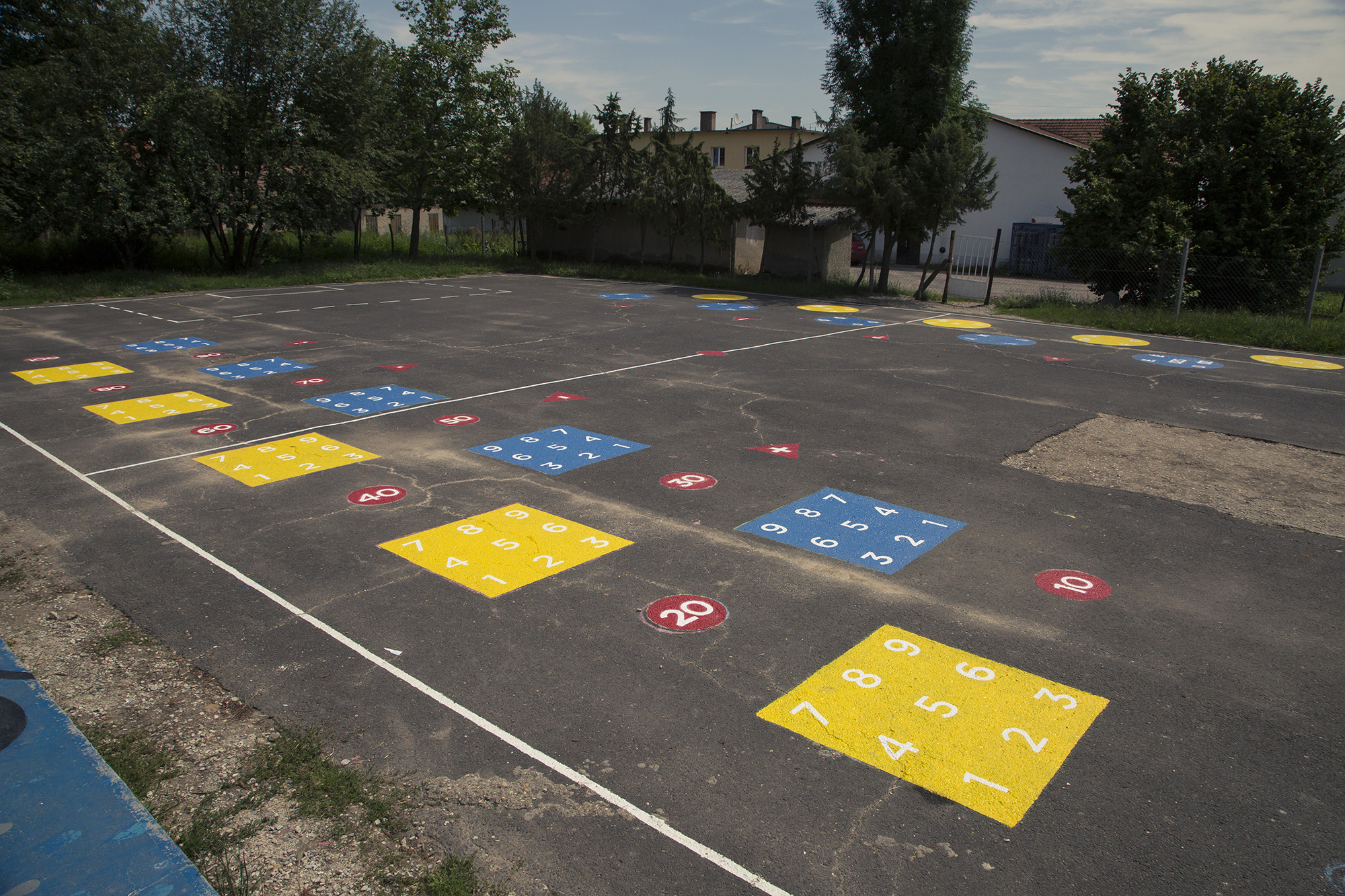
An open learning landscape left room for more than teaching maths and numbers. Copyright: Nikolett Kustos; courtesy of Cloudfactory.
Designing a better way of life together
Social design attracts enthusiasm from different quarters both for its variety of methodologies and interdisciplinary approach. Its problem-driven and iterative processes seem to hold promise for addressing critical issues in complex settings.
However, social design equally draws criticism for imposing ill-informed, externally thought-out solutions on vulnerable people. It has even been criticised as a form of new imperialism, in the sense of imposing external ideas and values, with only a partial understanding of how these short-term interventions impact those they are meant to serve.
Bódvaszilas is a world away from the urban centre of Budapest. The Cloudfactory team easily could have fallen into the trap facing many other design or research endeavours, with students and teachers travelling outside of their well-resourced classroom or normal city context to share and develop their knowledge, designing and think “at” communities. But the Cloudfactory is trying to do something different, Fehér says.
She and her colleagues wanted to create a process that runs counter to solutions built outside of a problem’s context. Such solutions suppose that an intervention – by governmental or non-governmental organisations from outside a community – is a gift from people with access to knowledge and expertise, given to people with unmet needs and problems who lack that access.
In contrast, the Cloudfactory exists to empower and build resilience for the local population by enabling and inspiring their creativity in response to social, economic and environmental problems. But what does it mean for designers to facilitate resilience?
“Resilience can be built by working according to specific principles, such as broadening participation, encouraging learning and managing feedback. These principles need to be applied in a way that responds to the local context,” says Reinette “Oonsie” Biggs, a professor of social-ecological systems and resilience at Stellenbosch University and researcher at the Stockholm Resilience Centre.
What does it mean for designers to facilitate resilience?
In discussions with Massive Small, Biggs and Fehér expressed the idea that different communities require different starting points for resilience. For this community to be resilient, Cloudfactory quickly discovered that the village lacked cohesion for a collective response to social or ecological challenges. They decided to start there. By working in an incremental way, the Cloudfactory seeks to build resilience by finding new pathways for development to allow all to thrive, including socially excluded groups like Roma children.
On a very practical level, the Bódvaszilas project promotes and shares knowledge of hands-on building techniques to enable creativity and initiative among villagers, starting with the children and their families and rippling out. Equally important, however, are new ways of thinking: design thinking; confidence to learn through experimentation and failure; and redefining race and gender-based social roles.
The Cloudfactory does this by bringing university students, design experts from a range of disciplines, economists, anthropologists, sociologists, and school pupils and teachers together, to apply social design principles to local challenges. This kind of participation requires experts set aside their expertise and work outside the comfort of their disciplinary boundaries.
Fehér and her team facilitate an attitude of possibility by allowing for diverse perspectives to interact, gently challenging each other’s prejudices and blind spots. In this process, the Cloudfactory builds confidence for young social designers, and provides skills and encouragement for specific groups of children. Through all of this, it models a new set of social relationships and the possibility of greater social cohesion, a bedrock for increased local resilience in the face of climate change, such as increased flooding.
The MOME EcoLab and the Cloudfactory embed sustainability in all the projects they propose. One of the first failed experiments in the community tried to support sustainable local foraging by providing designed racks for preserving food for use or sale. But when winter came, these wooden structures had more value as firewood than as entrepreneurial tools. They simply did not respond to what the community needed.
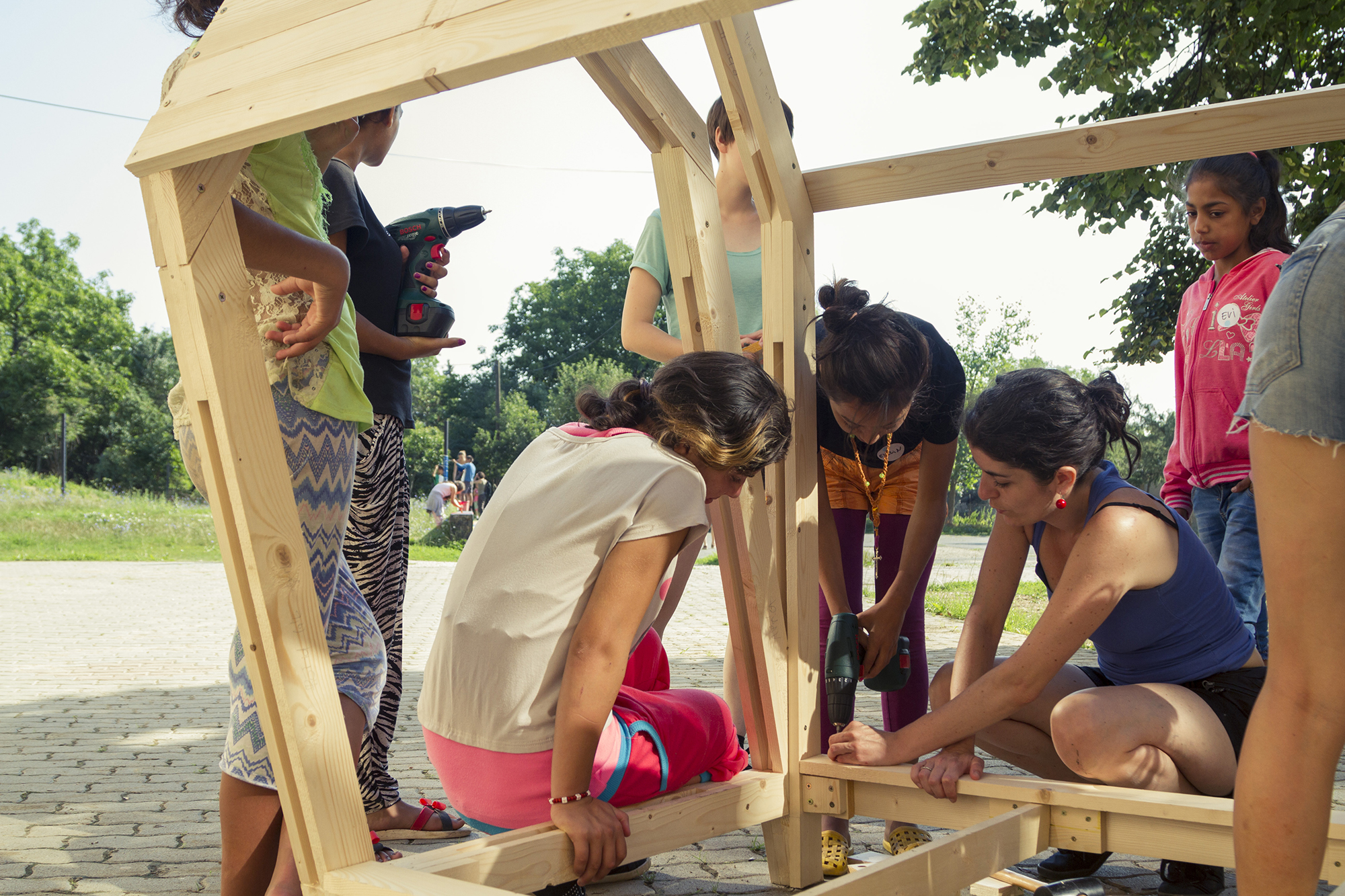
Building together: Children learn to use tools and building techniques, with Fehér and the Cloudfactory. Copyright: Nicolett Kustos; courtesy of Cloudfactory.
After its first two years, the Cloudfactory focused its time on single a class of students, working with them since 2012. Over the past five years, these children have become ambassadors for a creative, design-informed approach to problem-solving, and for the Cloudfactory itself. Together, they have implemented several small design-build interventions, including building and placing the bench at the centre of their community.
The installation of the bench is only one point in the process, but in the context of that process, the bench transforms from unremarkable to alchemical. The Cloudfactory emphasises manufacturing perspectives, not products. That makes the bench a reminder that the impossible becomes possible over time, as the community acquires new perspectives and tools.
Today the Cloudfactory continues to grow, embedding environmental and social sustainability in all its work. In Bódvaszilas, school teachers are now working with the team to introduce local gardens to bolster food security. Valley residents and students working with the Cloudfactory have also initiated their own projects beyond the village.
Fehér has taken the work even farther afield, to Baltimore, Maryland, where she established a partnership with the Maryland Institute College of Art (MICA) Center for Social Design. As she told Massive Small, the similarity between challenges and solutions in these very different communities is a reminder to look past geographical divides or dichotomies, such as rural/urban or developed/developing, to find lessons from unlikely places. It is precisely this disruptive perspective that drew us to her story.
By challenging perceptions, the Cloudfactory shows how small interventions can unlock new trajectories, sometimes imperceptibly at first. This is complexity thinking in action, and necessary for building resilience in situations where development interventions have become stuck in preconceived narratives and prejudices.
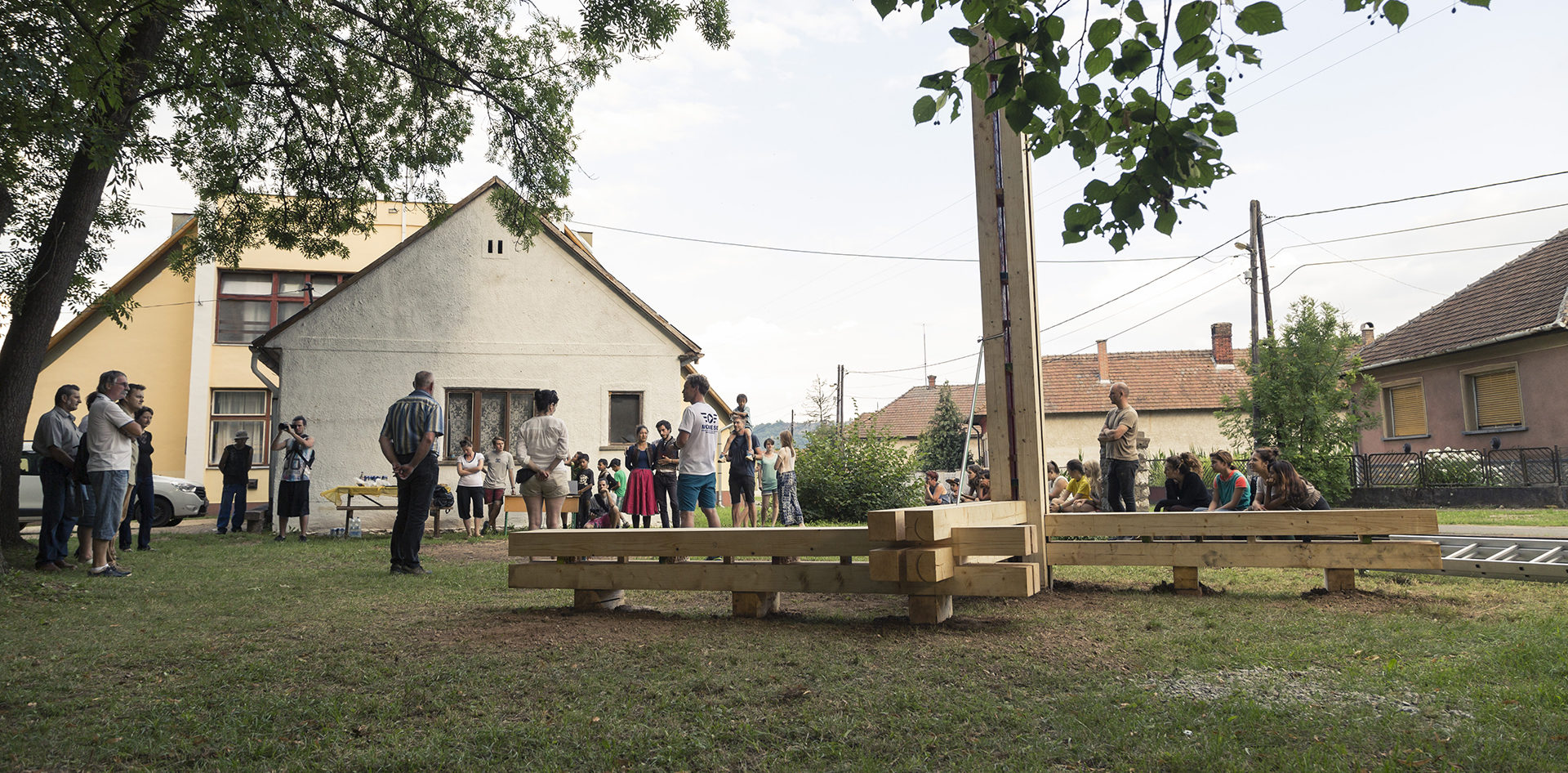
 15 MIN READ / 2236 WORDS
15 MIN READ / 2236 WORDS